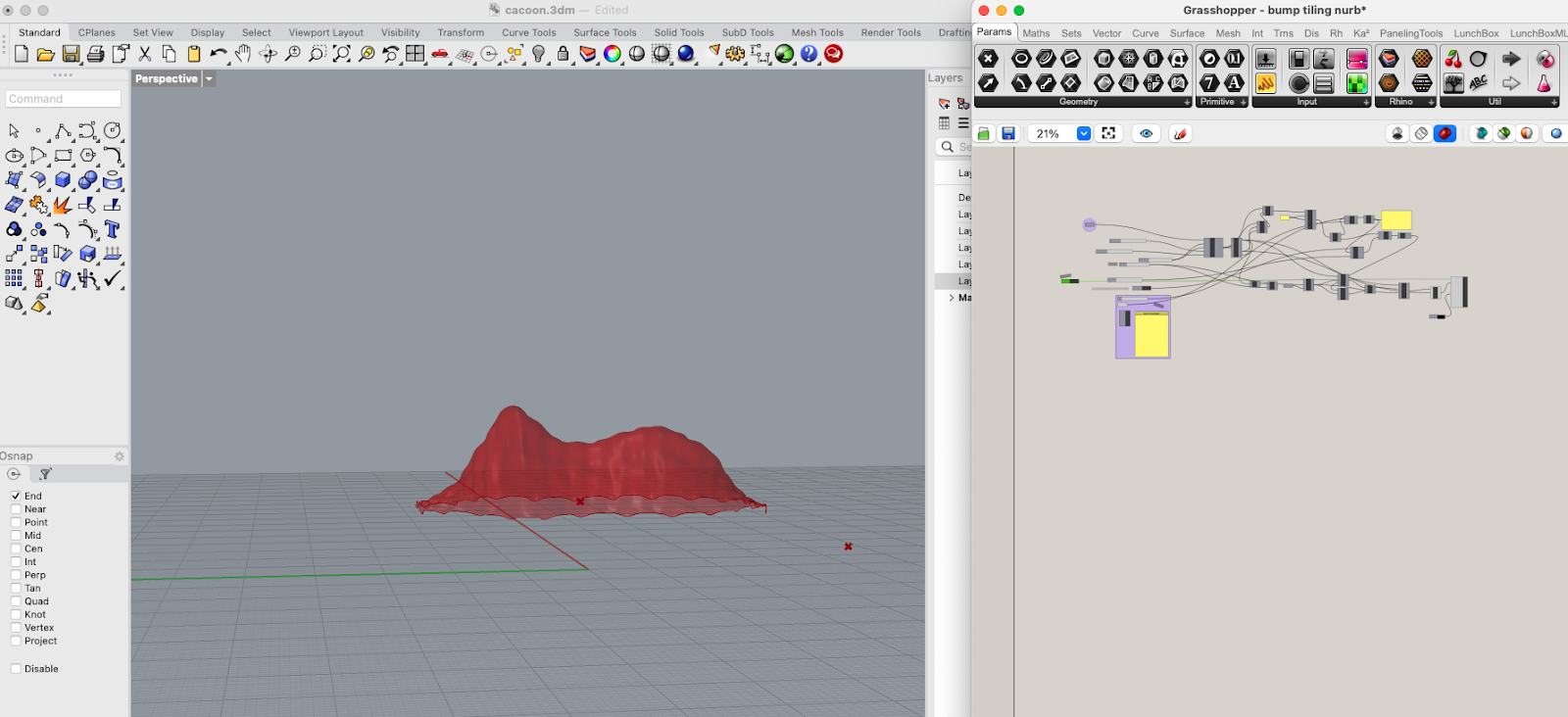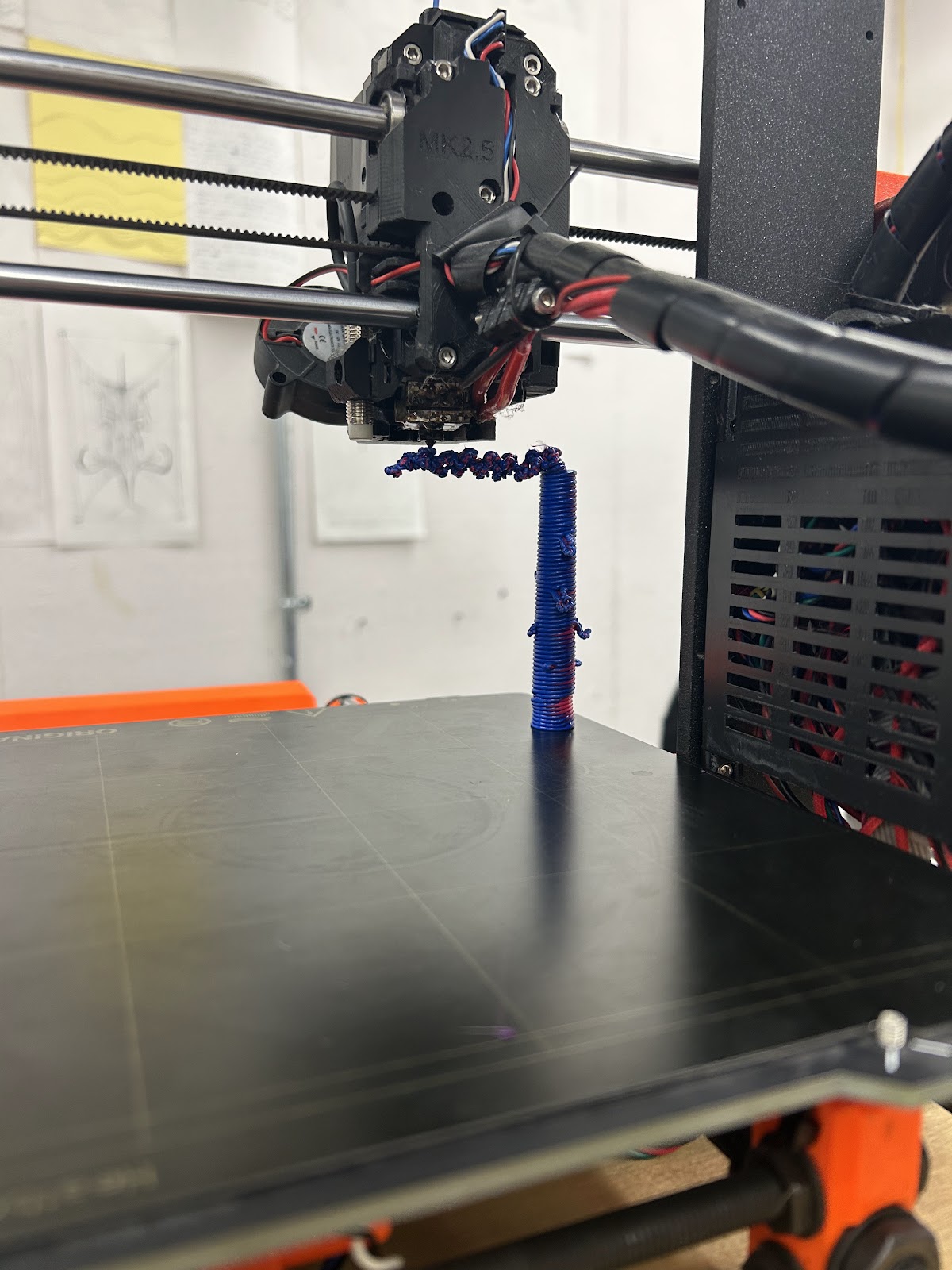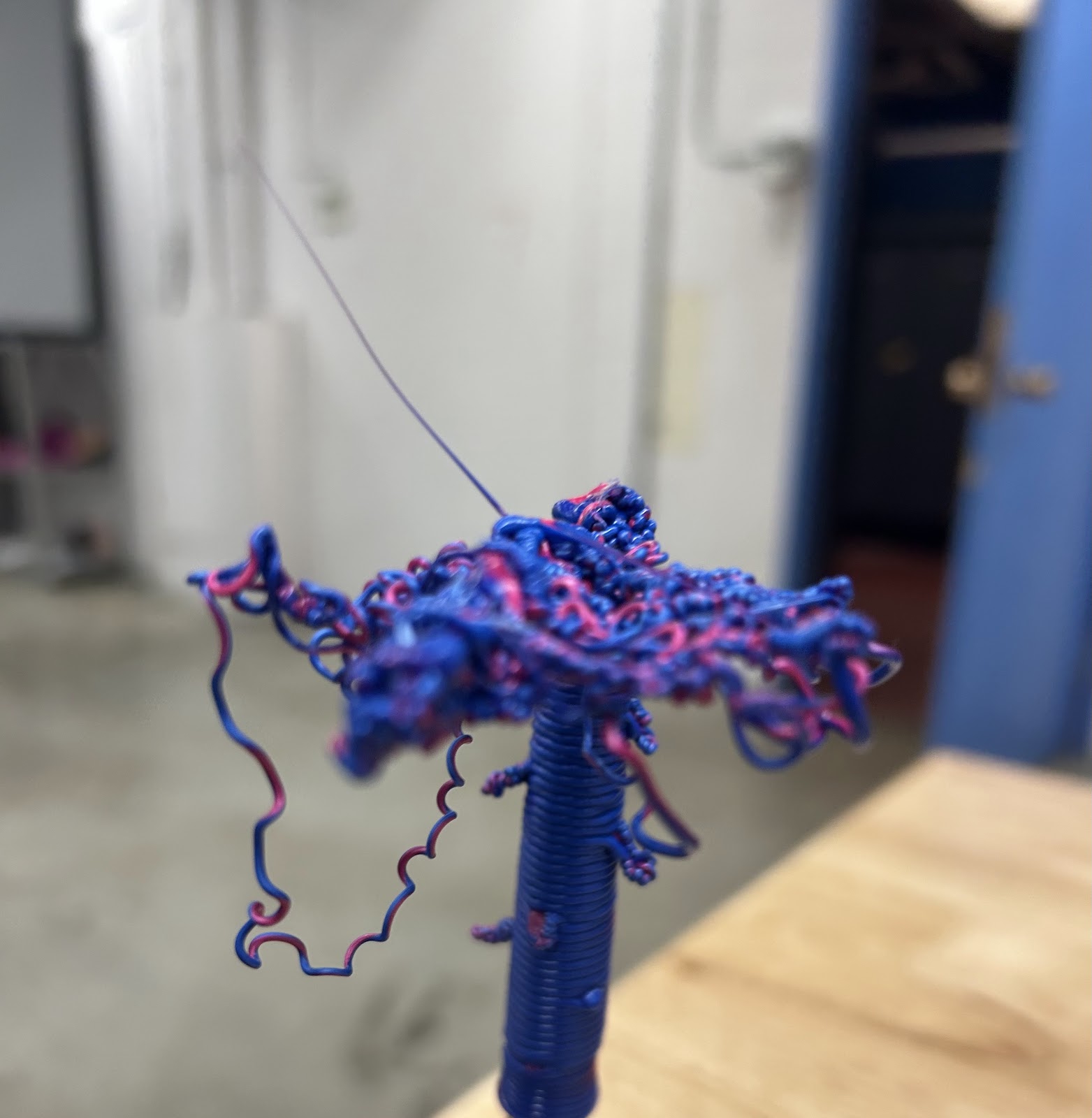NONLINEAR FDM TOOLPATHS
My first thought was to repurpose some curves from a previous project and build something layered with extra material. But once I got started, I just wanted to see how weird and organic I could make it. Turns out, pushing a 3D printer beyond its usual clean lines is a lot more fun than I expected.
I based my design on a butterfly chrysalis (cocoon), organic, textural, and a little unpredictable. But getting that texture to actually show up in Rhino was a struggle. I redesigned it so many times trying to make the curves translate into something interesting when printed. At some points, it was just frustrating. But once I finally had something I liked, I knew I wanted to explore this kind of structure even after the assignment was over.
(There was a lot of redesigns)
I don’t know what it was, but my G-code just would not cooperate. I kept running into issues, and honestly, by the time I got to printing, I wasn’t even sure it was going to work. Thankfully, Brian was there and helped me realize that I had actually structured my G-code for super thick layers. I totally forgot that was part of my design, but in the end, it worked in my favor because it created this really cool, chunky texture.
I played around with looping, wavy paths, and just letting the filament do its thing. The result? A heavier print with an awesome texture. I really wanted to push the material to its limits to see how it could dry into solid shapes but still feel liquid in motion.
Only downside? The bottom structure wasn’t stable. If I had more time, I’d figure out a way to make it stand properly
Honestly, this was one of the most fun projects I’ve worked on. I could sit there for hours just watching the printer do its thing. If I had more time, I’d keep tweaking the design, experimenting with different ways to control (or completely let go of control over) the filament.
This project also made me think about Object Design differently. Usually, slicers keep everything clean and predictable, but this process let me break the rules a bit and see what happens when you let the machine get weird. I love that, and I definitely want to keep playing around with it.































Comments
Post a Comment